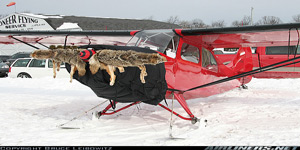I'm not convinced that's peculiar to Airbus Matt. Most aircraft will automatically recover from a stall if left alone. I always understood that aerodynamics plays very little part with this type of aircraft. I remember the impressive demonstrations of the Airbus at Farnborough at an extreme alpha angle when a conventionally controlled aircraft would have fallen out of the sky. http://www.youtube.com/watch?v=0jz957KRXzQ
In your example would not the computer attempt to correct the nose-down attitude by applying up elevator? This would be the normal reaction of a human pilot in a conventional aircraft in similar circumstances & would make the situation worse.
What's always worried me about 'fly-by-wire' systems is whether it's possible for the crew to override the computer or even have any control at all in the event of a catastrophic electrical failure. When the whole system relies on a simple component like a pitot tube did they ever think to have a backup of a different type in case it goes wrong? A chain is as strong as its weakest link.
Pitot tubes are fitted to all types of aircraft & have worked reliably for many years so what's different about the ones used by Airbus?
That is the whole idea behind this aerodynamic design. If the entire fly by wire system failed then the aircraft can be flown by differential thrust alone. We have seen with for example with the Soux City crash that it was possible with a DC 10, but it is designed into the Air Bus not to be possible, but to be able to do it. This is one of the reasons why the flying control surfaces are aerodynamically neutral. Without power, they droop on the ground, but in the air without power they go naturally neutral with the airflow and cannot freeze in an up or down position. Can the pilot over rule, the answer is a big NO! Against this, outside of one very public accident, when have the computers got it wrong agaist the rather large number of pilot error accidents? As for the pitot tubes going tits up, for start there is not just one. The pilot has one, the co-pilot has one and then they have a standby. It cannot boil down to just a pitot failure. The right and left systems are separate as is the standby system. What is common to the three systems is pitot heating, but even that has different channels. Without the CDR and CVR it is just speculation and window dressing by anyone who decides to replace fleet wide pitot tubes.
Matt
Thanks for clearing that up Matt. However, are not the engines controlled by the same fly-by-wire system? If the whole system failed through lack of power I don't see how any of this could help.
If the reports are correct & the aircraft was in a storm with severe turbulence then normal aerodynamic theory goes out of the window. There has been a lot of speculation that the speed sensors (pitot tubes) contributed to the disaster. I don't know how true this is or where they got the information but Air France have confirmed that these were due to be replaced on their whole fleet of A330s in accordance with a manufacturer's service bulletin. While this was not mandatory it indicates that there was a known fault with the original components.
I also couldn't understand why the Brazilian government has been insistent from the beginning that terrorism was not involved. I'm usually critical of the media for blaming everything on terrorists but in this sort of situation nothing should be ruled out.



 People Eating Tasty Animals.
People Eating Tasty Animals.
